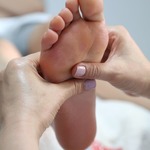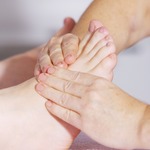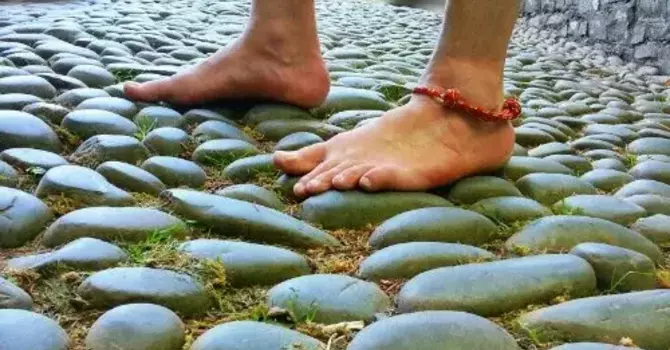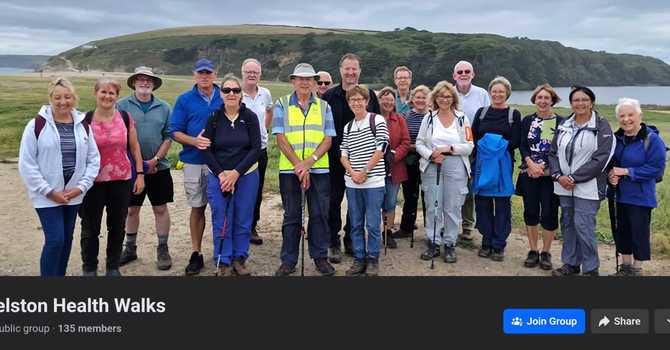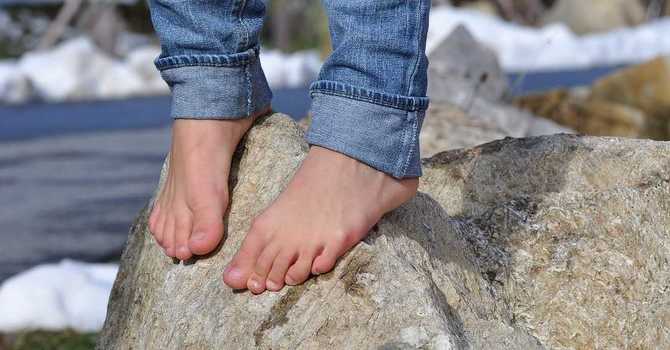Foot Mobilisation Therapy
Many people have foot and ankle problems because their joints get stiff. These problems range from arthritis to plantar fasciitis heel pain.
There's a treatment most people have never heard about which restores feet and ankles back to normal with very little effort. It's called foot mobilisation therapy. Or FMT.
I have been using it successfully in my practice for over 25 years.
Foot Mobilisation Therapy Helps:
- Release connective tissue restrictions of hypo-mobile joints, increasing the joint range of motion in stiff joints & works to release collagenous joint restrictions to restore healthy joint surface relationships.
- Stimulates synovial fluid production to help keep joints lubricated and provide cartilage nutrition. Cartilage and joint health relies on regular loading & movement.
- Restores the optimal neuro-physiology of the joints and foot in general.
All of the joint ligaments in the foot & ankle are laden with mechano-receptors to keep the brain informed for proprioception.
Proprioception is the sense of self-movement and body position. It is sometimes described as the "sixth sense".
It's how your brain subconsciously monitors what every part of our body is doing at any moment. Proprioception is mediated by proprioceptors, mechano-sensory nerve endings located within muscles, tendons, and ligaments around joints.
Our feet are one of the areas of our bodies with highest concentrations of these specialised nerve endings to enable balance and optimal movement during gait & posture.
When the joints in our feet work slightly out of line, as occurs with flat feet or dropped arches, these mechano-sensory nerves don't work properly, often leading to the neurological state of sensitisation which makes people more sensitive to pain with less provocation, especially in chronic conditions.
FMT stimulates the joint mechanoreceptors to reduce sensitisation and reduce muscle guarding. This results in pain relief and more comfortable joint movement.
In Summary:
- FMT releases joint restrictions in hypo-mobile joints.
- FMT stimulates synovial fluid helping arthritic joints.
- FMT provides pain relief through neuro-physiological stimuli.
FMT works with or without orthotic therapy, and can be incorporated into other therapies, such as exercise therapy with outstanding success.
Following FMT you will usually feel a sense of increased joint flexibility.
Occasionally some patients feel a slight ache in the area around the joints which were mobilised, which lasts for a few hours. You should NOT NEED to take any painkillers, but some people do.
If we have also used PBM Therapy (Low Level Laser Therapy) it is advisable to avoid NSAID’s (non steroidal anti-inflammatory drugs like Ibuprofen) as this can reduce the effect of the PBM Therapy.
Many people feel the benefit of the FMT straight away, but it’s effects can diminish slightly a few days after the initial treatment. Most people need at least two FMT sessions, sometimes three, with the additional FMT sessions only requiring a short amount of time.
Most patients will continue to do well indefinitely and will require no more treatment. A small number of patients require regular FMT sessions to maintain their pain relief long-term, but without the need for pharmaceutical drugs and their associated side-effects.
Please call our clinic reception on 01326 565 565 for more information or to make an appointment




